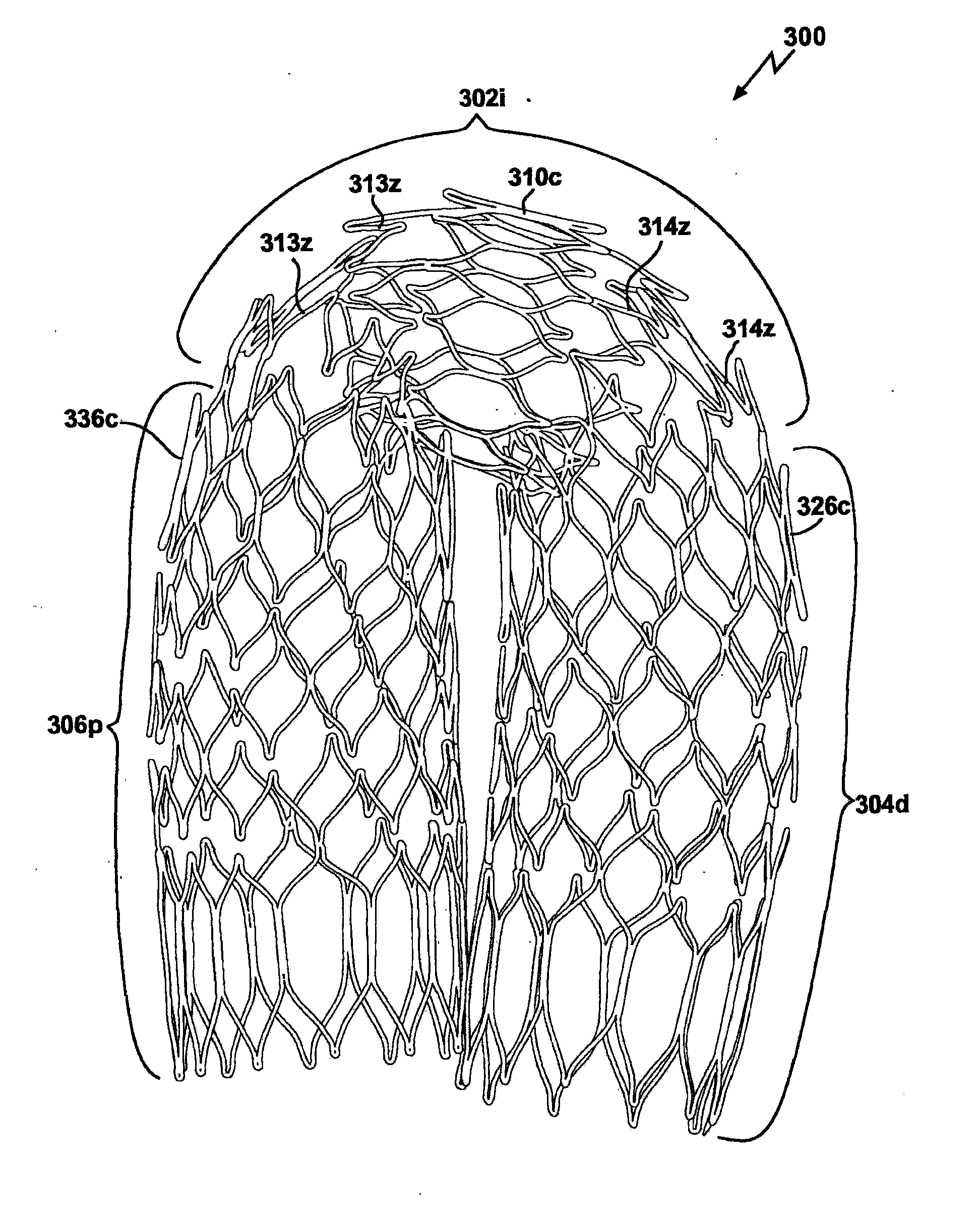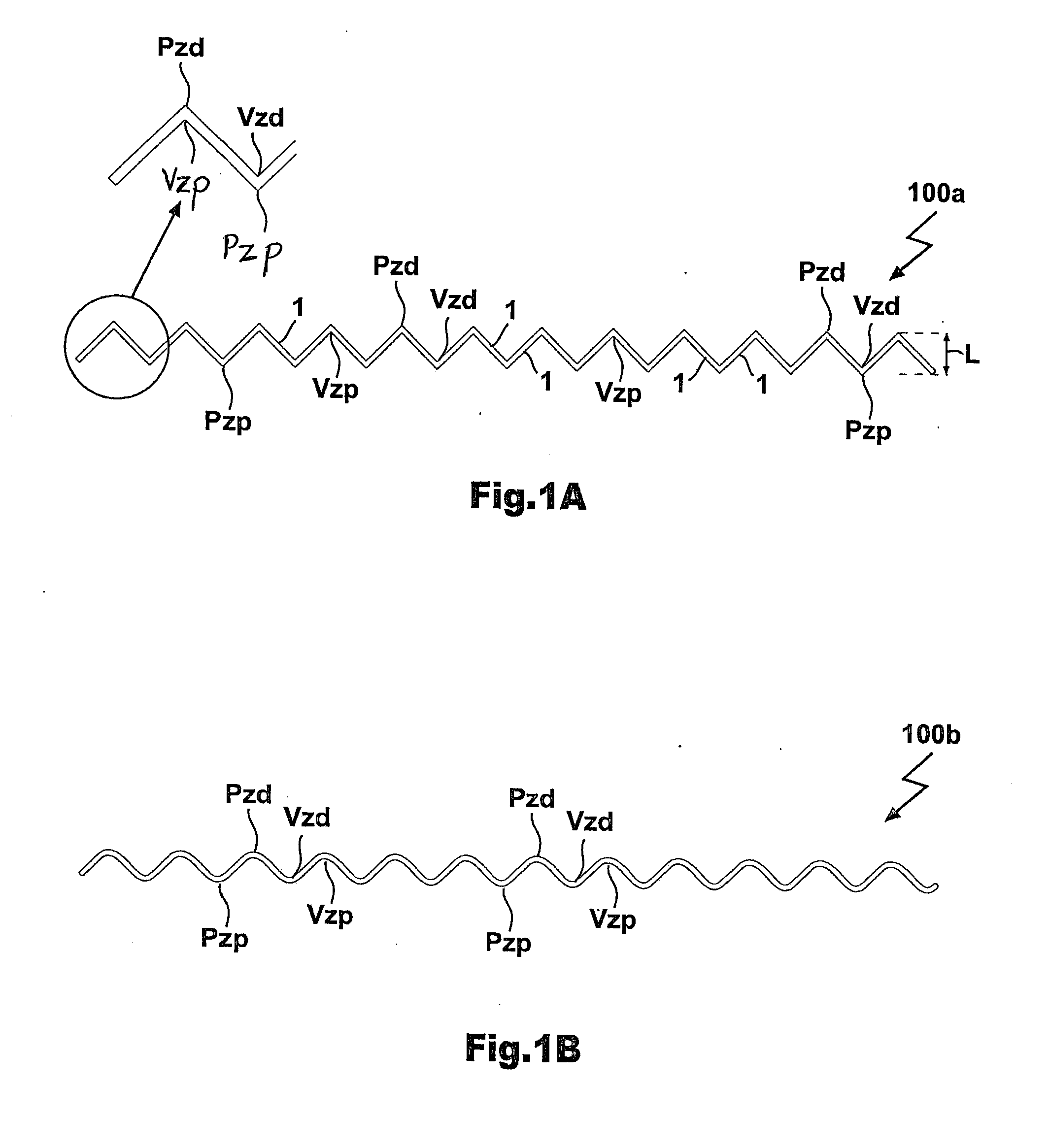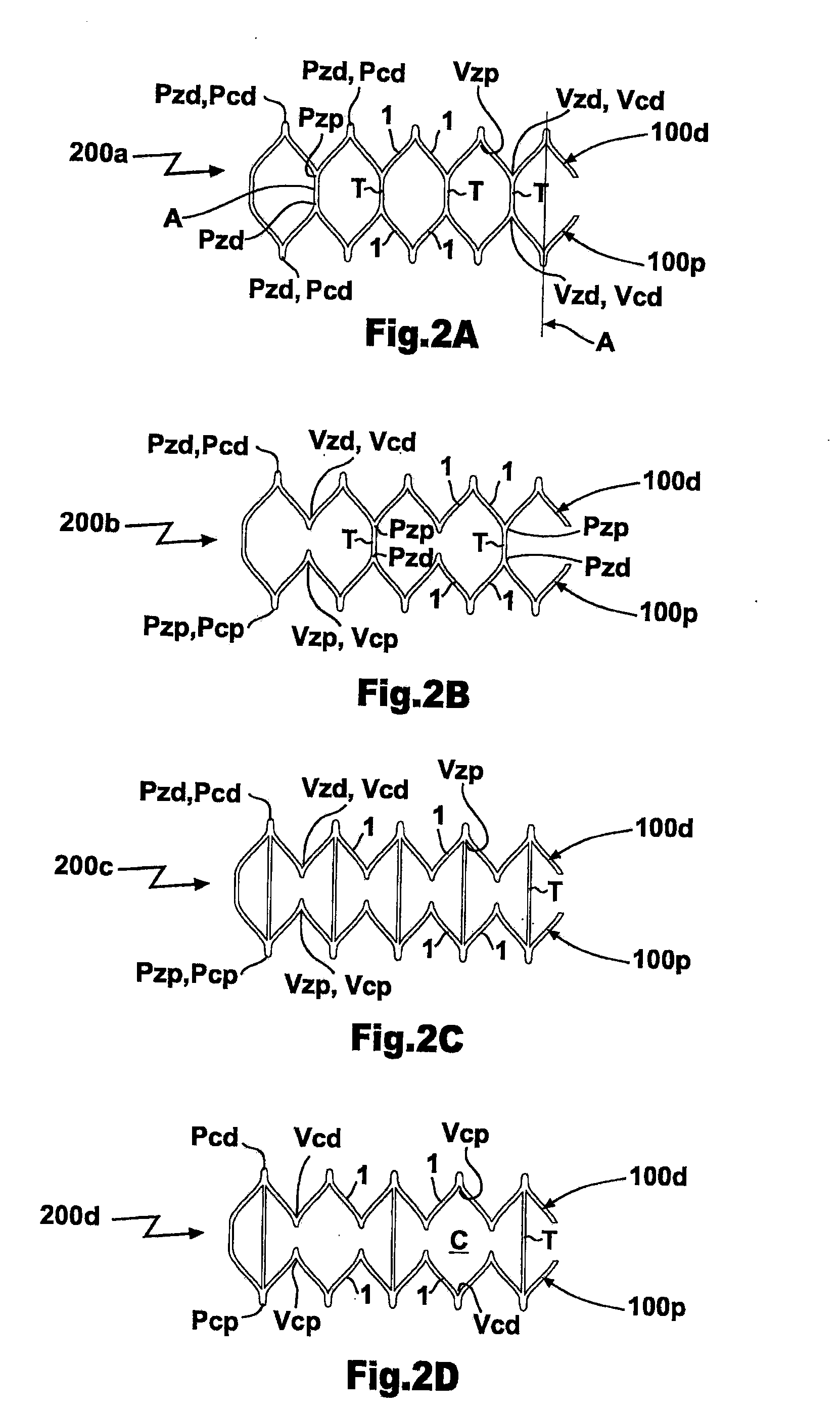Multi-Segment Modular Stent And Methods For Manufacturing Stents
a modular stent and multi-segment technology, applied in the field of medical devices, can solve the problems of more exuberant intimal response, intimal trauma, and higher incidence of restenosis, and achieve the effects of reducing frictional motion, constant microtrauma and aseptic inflammatory changes, and reducing the incidence of restenosis
- Summary
- Abstract
- Description
- Claims
- Application Information
AI Technical Summary
Benefits of technology
Problems solved by technology
Method used
Image
Examples
Embodiment Construction
[0081]A stent in accordance with the invention has a modular construction constituted by a combination of interconnected segments of annular Z-rings and closed-cell rings. Each module is formed of three segments including an intermediate segment comprising either a closed-cell segment or a Z-segment and a pair of end segments comprising the other of closed-cell or Z-segments.
[0082]Referring now to the drawings wherein like reference characters designate identical or corresponding parts throughout the several views, and more particularity to FIG. 1(a), a Z-ring 100a comprises struts 1 which together define a plurality of “Z” or sinusoidal or wave shapes. The struts 1 may be formed by expanding a laser-slotted metallic tube, or from portions of a single wire, or from individual wire elements, or by any other method of construction known to those skilled in the art. The mesh design of the stent can be laser cut from a large diameter tube, which is equal to the final diameter of a fully...
PUM
 Login to View More
Login to View More Abstract
Description
Claims
Application Information
 Login to View More
Login to View More - R&D
- Intellectual Property
- Life Sciences
- Materials
- Tech Scout
- Unparalleled Data Quality
- Higher Quality Content
- 60% Fewer Hallucinations
Browse by: Latest US Patents, China's latest patents, Technical Efficacy Thesaurus, Application Domain, Technology Topic, Popular Technical Reports.
© 2025 PatSnap. All rights reserved.Legal|Privacy policy|Modern Slavery Act Transparency Statement|Sitemap|About US| Contact US: help@patsnap.com



